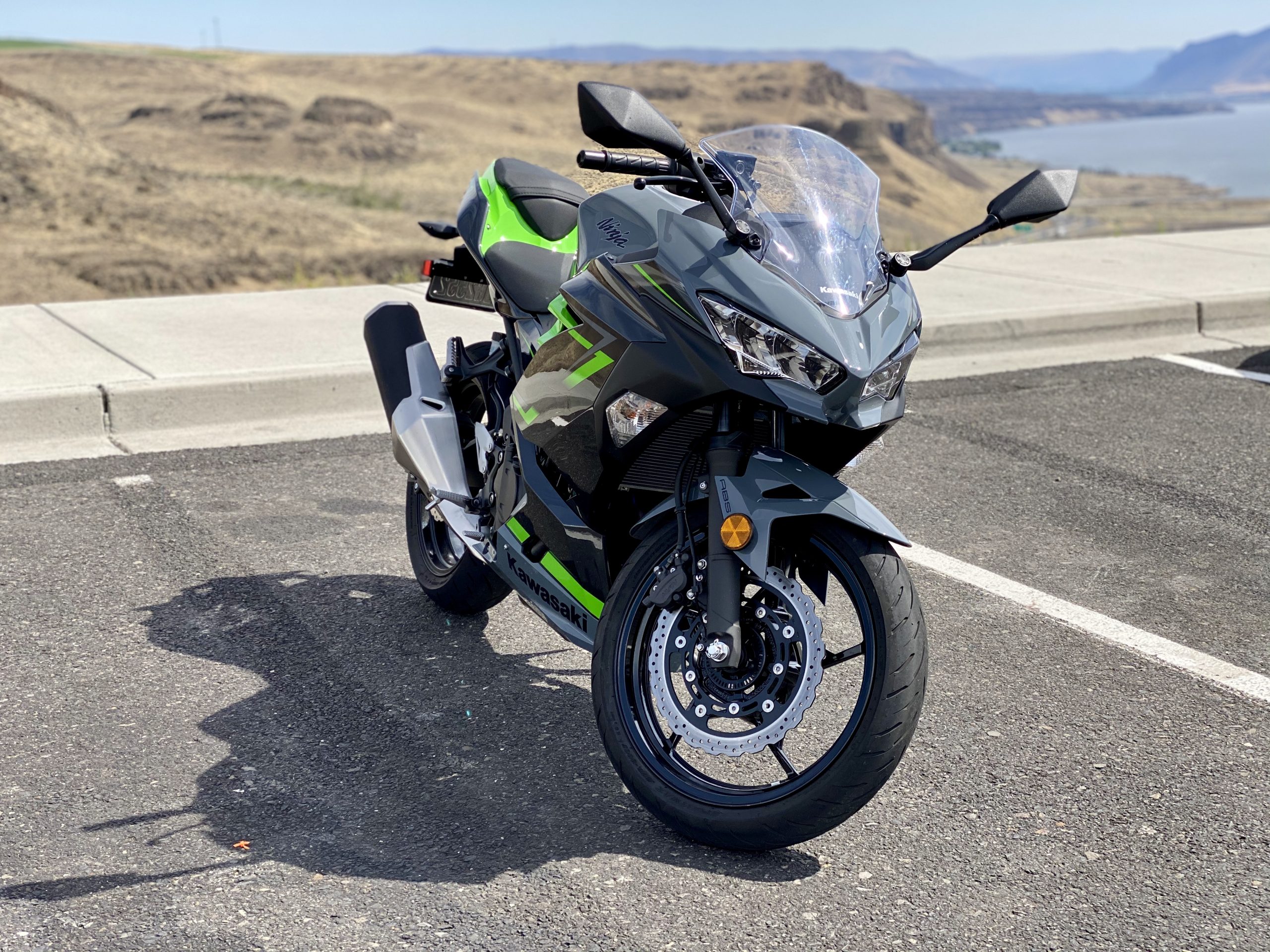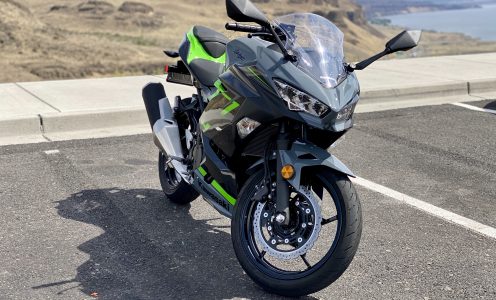I’ve been riding my motorcycle for a year now and have gotten to know it on a first-name basis. I figured out the kind of rider I am and how this machine delivers on my riding needs. Countless hours were spent watching YouTube before buying this bike. Looking back it becomes clear that most of the videos talk about the same stuff – tech specs, maintenance tips, upgrades, and a few more. However, none of them cover things you learn and experience spending hours in the saddle. This article will give you a much deeper overview of the motorcycle if you are looking to buy one.
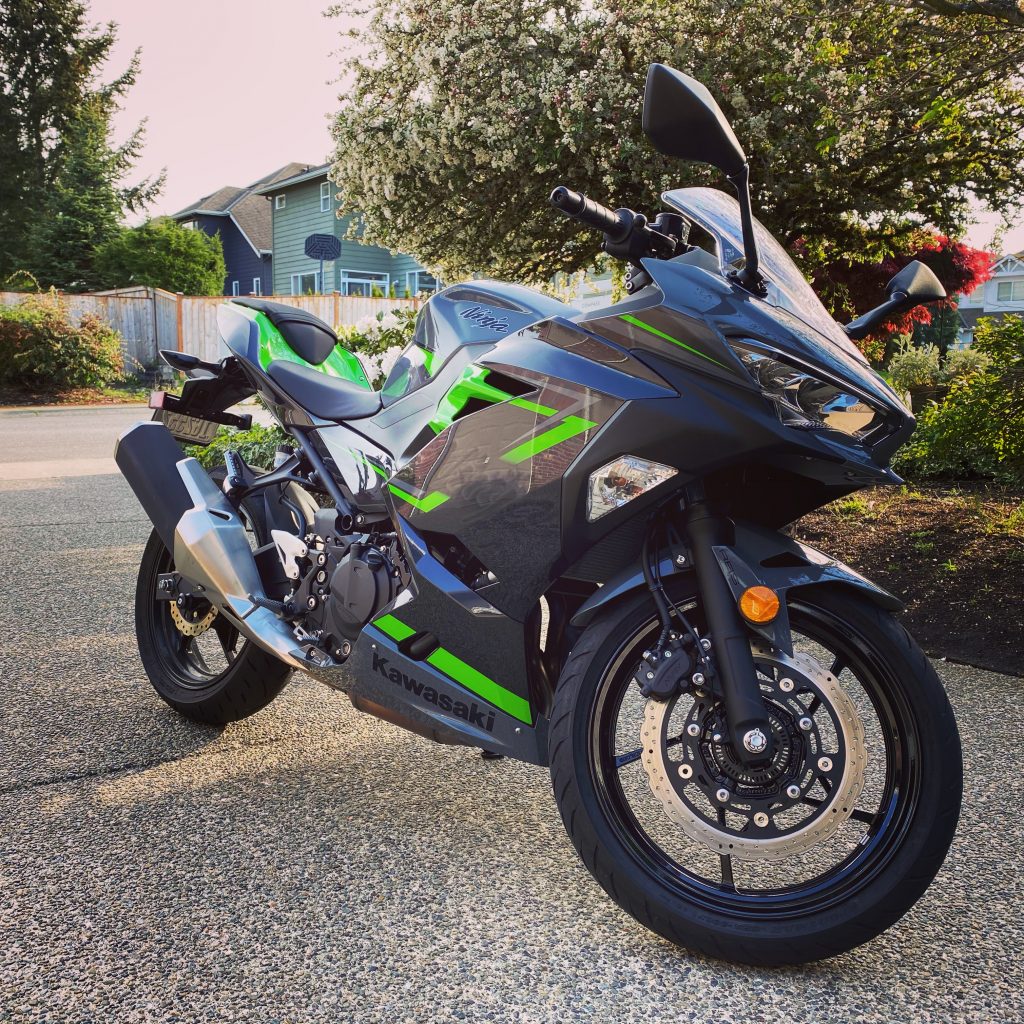
Size
★★★★★
Contrary to popular belief, this motorcycle does not feel small. It is visually indistinguishable from the Honda CRB1000RR in terms of size. You can peel off the “400” sticker on the pillion and experienced riders wouldn’t guess engine size immediately, let alone people who don’t ride.
I am over 6 feet tall and weigh almost 200 lbs, yet I feel comfortable on this bike. There is enough space to adjust my riding posture on the road and I don’t feel cooped up one bit. I can’t get fully tucked behind the windshield but that is not something you’d be doing riding on the freeway anyway. It has more to do with motorcycle ergonomics than size.
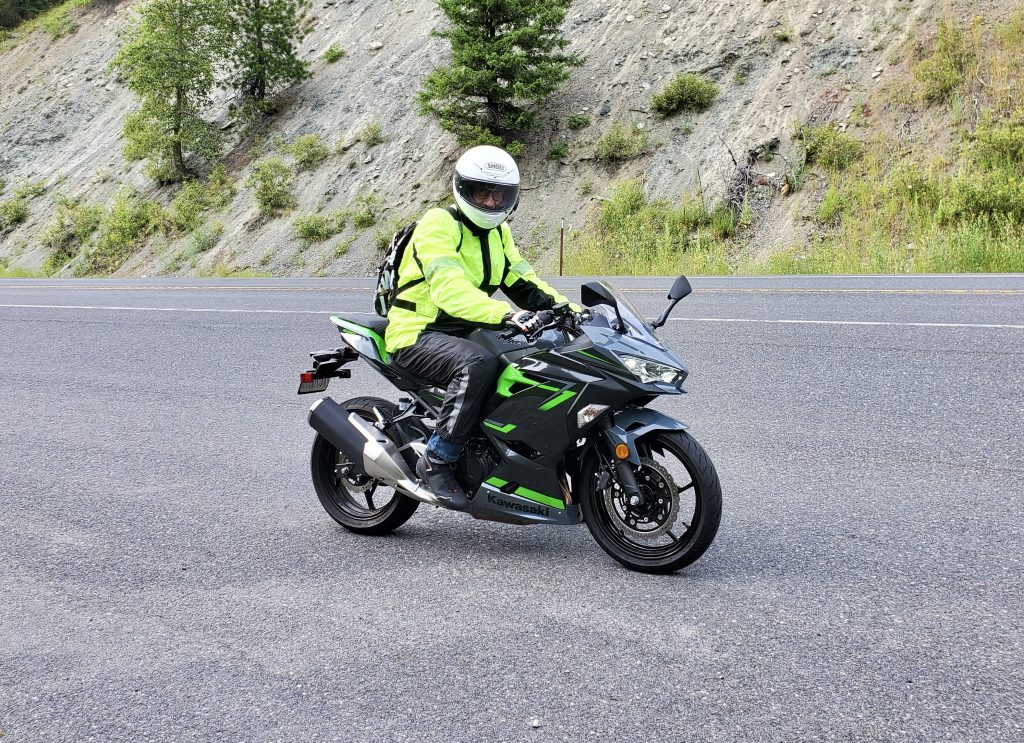
Ninja 400 offers a great view of the road around and in front of the motorcycle. Nothing is sticking out obstructing the view or ruining the airflow. It is thin enough to be able to split the lanes without bumping your knees into the cars. (Do it only if it is legal in your state).
Weight
★★★★★
This motorcycle is super lightweight, which is both a good and a bad thing. The good part is you can flick this bike easily doing 70 mph on the freeway. At regular speeds, you can’t feel the weight at all. A few times I was able to catch this bike as it was leaning too much to the side at the stoplight.
The downside of the low weight is the side-wind effect. I took the bike to the prairie in eastern Washington where the wind is mercilessly blowing perpendicular the freeway. It almost pushed me off the road on a few occasions. Controlling the motorcycle in the gusty wind is hard because you would do that by leaning. If the wind suddenly disappears you can low-side the bike. If it picks up, you can high-side it.
The weight distribution of the motorcycle is great though. If you’re standing on the steep hill you won’t flip backward. Seattle is packed with hills with intersections. Standing at the stoplight on the hill sucks noodle, but because the bike is light, you neither roll nor do a back-flip.
Ergonomics
★★★★★
There’s a great website for checking motorcycle ergonomics – http://cycle-ergo.com/. Ninja 400 comfort is between a cruiser (most comfortable) and a supersport (least comfortable). It is a compromise between aerodynamics and the ability to ride for hours without stopping.
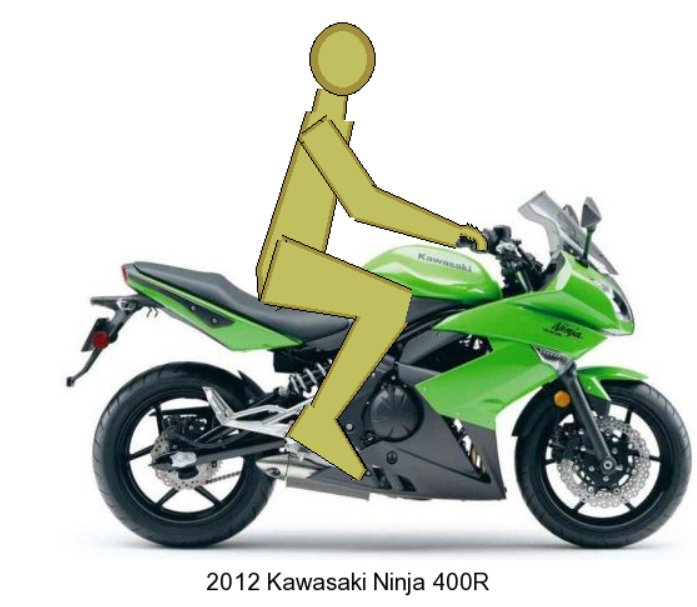
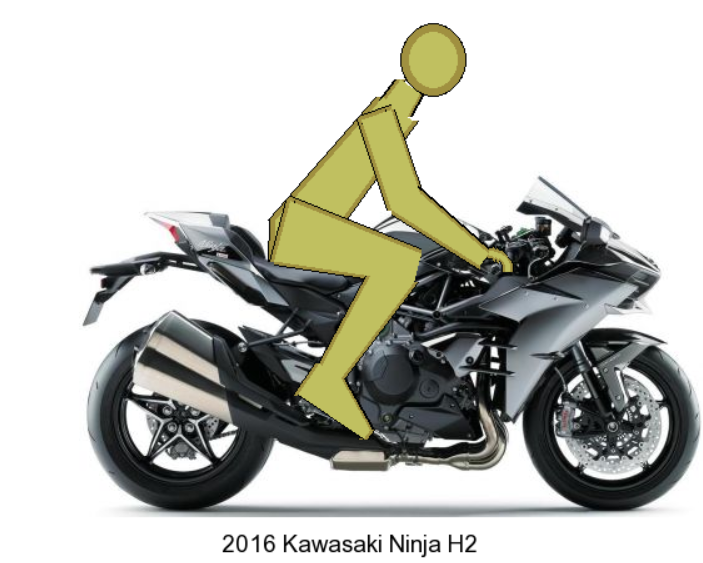
If you are planning to use Ninja 400 for commute then it is a perfect machine for you. Body lean angle is adequate for you to pay attention to the road but not sufficient to make you want to race everyone. I noticed that an aggressive lean angle makes people perceive every moving object as a competing racer.
I’ve taken this motorcycle on road trips through Cascade mountains. The most I was able to ride without stopping was 2 hours. The longest I’ve been able to ride a day was 5 hours. Approximately after 3 hours on the motorcycle, you start to feel the seat. It is not comfortable for long-distance travel. Shortly after that, your shoulders will start to hurt and no amount of posture adjustments will help. You will want to sit straight but you can’t because it is not a cruiser and your hands won’t reach the clip-ons if the body is completely upright.
All motorcycles are purpose-built and the purpose of Ninja 400 is short-to-medium distance travel with stops.
Wind protection
★★★★★
Let’s be frank, without a large windshield this motorcycle offers very little wind protection. If you are riding in a hot climate then this may be a great thing, to an extent. However, if you are mostly in a continental climate then it will not be pleasant. The wind chill chart from CycleFish shows just how much temperature drops when riding a motorcycle without a windshield.
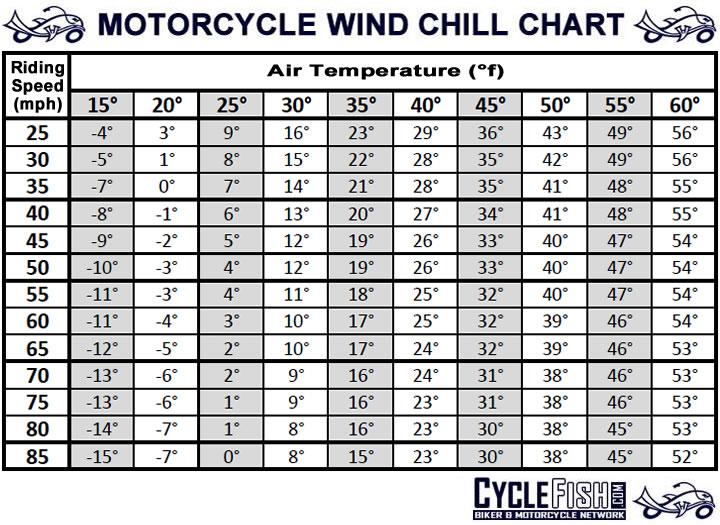
To put this in perspective:
- When it is 80F outside it is sufficient to wear a t-shirt and a motorcycle jacket to stay warm on the freeway. You will sweat a bit but will mostly be fine doing 70 mph. If you stop at the light, you will be cooking. If you get stuck in the traffic you will cook as well. The moment you start moving you’ll be fine again. Everyone around you will be wearing shorts and flip-flops.
- In 70F you will feel the need to have a long-sleeved hoodie under your jacket. T-shirts will no longer cut-it on the freeway. You will be cold and hence distracted, which will be dangerous. People in the street will continue to wear shorts and flip-flops.
- In 60F you will want to have a windbreaker on top of your jacket to preserve body heat. Squidding is not an option.
- When it is 50F you are looking at a thick sweater with a turtle neck under your motorcycle jacket and short freeway trips at best.
- Anything below this temperature and you’re into custom gear territory – warm gloves, heated jacket, etc.
Ninja 400 provides no protection against the wind from either direction. The stock windshield is not adequate even to direct the wind away from your torso, let along above your helmet. You will feel mother nature in full force. Wind will hit you from the chest up. It will be tiring when riding for over an hour in the wind. Your neck will be tired of fighting the wind to keep the helmet facing forward.
The aerodynamics of the motorcycle is great, though. There is no buffeting when riding in the wind.
Fuel economy
★★★★★
Fuel consumption is low and the distance traveled per gallon far exceeds the average car. Tank capacity is about 3.7 gallons. Here’s how it feels in real life:
- To go from empty to a full tank of gas it costs about $10.
- You can ride this motorcycle in city traffic for about 2-3 hours and spend about 1 gallon. So if you live 30 minutes from work, you can commute the whole week for $10.
- You can go 2 hours on mostly flat freeway @ 60 mph and spend about a half a tank.
Maintenance cost
★★★★★
It costs very little to own Ninja 400, relative to Ducati or Harley Davidson. This motorcycle is cheap and reliable and is always ready to go. It needs occasional attention but nothing outrageous. It does need more attention than a car, though.
We’re not going to talk about license, registration, and insurance costs – those are given no matter what you ride. Let’s start with oil. Oil change intervals are very reasonable – 600 miles, 3000 miles then every 5000 miles on-wards. Unless Ninja 400 is your only mode of transportation, you are unlikely to make 5000 miles every riding season that starts in April and ends in October, on average. It is safe to assume you will be changing oil about once every year. Oil, filter, and labor will cost about $100. If you want to do it yourself, then labor savings will be about $50.
Every 500 miles you need to clean and lubricate your chain. I use Motul Chain Clean for $12 and Motul Racing Chain Lube for $15. Chain clean covers about 2-3 cleans, lube covers about 3-4, depending on your generosity. So if you are a dedicated rider doing 3000-4000 miles every season, you will clean your chain about 8 times, which will cost about $66 per year.
You will want to wash your bike regularly so there are some expenses on sponges, cleaning solutions, and cloth. Let’s round them up to $100 per year.
You will need a motorcycle wheel lift, battery maintainer, and a cover. Those will cost you about $200 as a one-time expense.
Reliability
★★★★★
Build quality is exceptional. The motorcycle feels solid, with no loose parts, no sticking cables, no asymmetric vibration. It feels like it’s molded from a single chunk of metal. No liquid leaks anywhere. I haven’t lost any bolts yet. Plastic doesn’t wobble and is firmly attached to the body. I have taken the bike to the mechanic only to perform recommended maintenance. There was no need for surprise visits because something stopped working or didn’t look right.
Slipper-clutch transmission is forgiving. It gets a good beating riding in traffic on city roads but continues to perform like on the day I bought it.
Stock tires are great. They don’t leak air and provide adequate traction in corners after a year of riding.
Throttle travel before it engages is little. On some bikes (like Vulcan S) you gotta twist that throttle almost 30 degrees before it engages. On Ninja 400 throttle engages after 10 degrees of rotation. It reduces wrist strain on distance travel.
Top Speed
★★★★★
This motorcycle is capable of sustained speeds far in excess of legal limits on the freeways. You are more likely to go to jail than reach designed capabilities of the motorcycle on public roads.
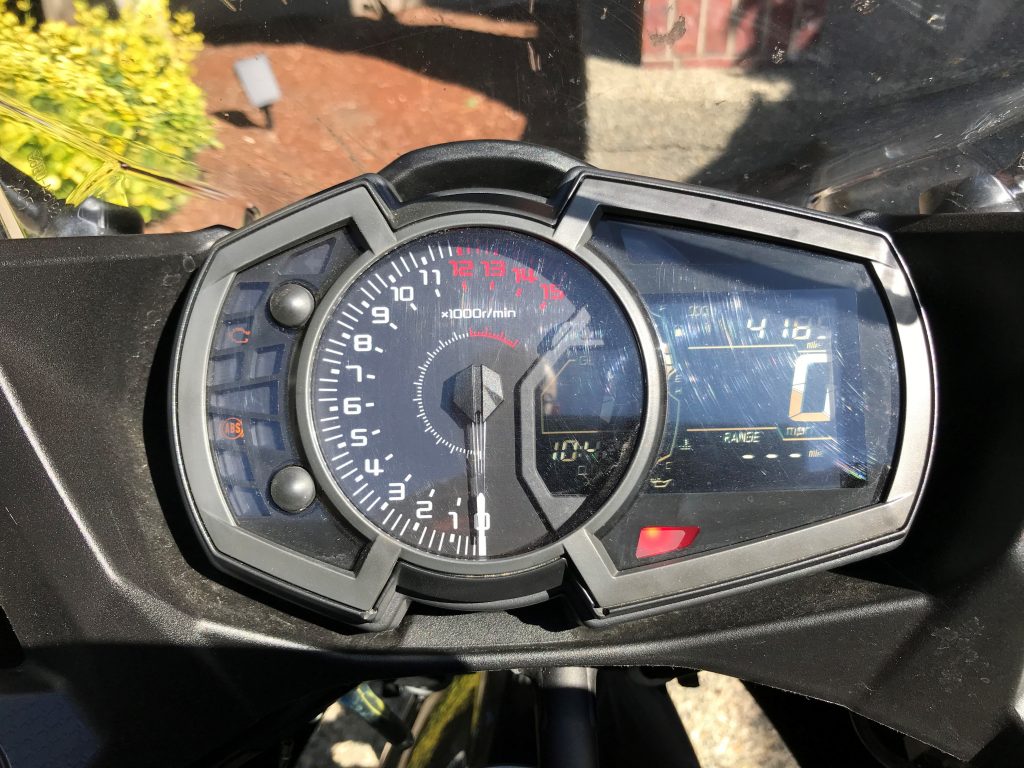
In 6th gear Ninja 400 has almost 1:1 mapping between engine revolutions and the speed:
- It is doing 60 mph somewhere around ~6k RPM
- It does 70 mph at ~7k RPM
Extrapolating this mapping linearly we’d be doing 120 mph at the red line. At that point, we would have at least one patrol car and a helicopter on our tail, which is not conducive to a long riding career.
Ninja 400 has an “eco” mode indicator on the dashboard at the top bottom corner. It notifies the rider when fuel consumption is optimal. This indicator is lit between 55-65 mph in the 6th gear and goes out at higher speeds. As such, at 70 mph it is off.
If you were to take this bike to the track you will not be the slowest rider. On straightaways bigger engine displacement super-sport bikes will smoke Ninja 400. However, in corners, Ninja 400 will dominate them. You will have fun riding it on the track, but you are unlikely to be the fastest rider.
Power
★★★★★
This bike is adequate for regular riding, but may not be able to save your bacon if you have to get out of the way quickly. Engine delivers power at high RPM but it takes seconds to increase revolutions to get the power you need. Take a look at the Dynojet for Ninja 400 from CycleWorld. This chart reflects my experience.
When the light turns green at the traffic light and you’re ready to go you will want to increase the distance between you and the car behind you. To do so you’ll need to reach higher RPM quickly, the engine will scream, people will think you are racing them and cops don’t like that. If your goal is to enjoy the ride at moderate noise levels – be prepared for cars to breathe down your neck.
If you are doing 60 mph on a two-lane road and need to pass a car in front of you by going into the oncoming traffic lane, you will notice that bike takes a few seconds to accelerate and pass the car quickly. Of course, if the car is doing 20 miles below the speed limit that should be no problem, but if the car is just below the speed limit and you want to pass fast, it won’t be fast.
Overall, the amount of power is sufficient to get you killed, but it lacks that “instant power” in moments you need it.
Accessories
★★★★★
Ninja 400 is a popular motorcycle hence there are plenty of accessories and aftermarket parts for it. There are loads of videos on YouTube about tail-tidy and exhaust upgrades. Additionally, you can replace your chain, wheels, breaks, throttle grips, footpegs, plastic fairings, tail light, windshield, and many more parts. Some of these accessories are not street legal, so be mindful of what you put on the bike. However, the spectrum of available accessories is broad.
One part that is kind of a bummer is the lack of real estate on your clip-ons. If you are looking to install a phone holder you really have only 1 option – fork stem. Nothing can really be mounted to the clip-ons.
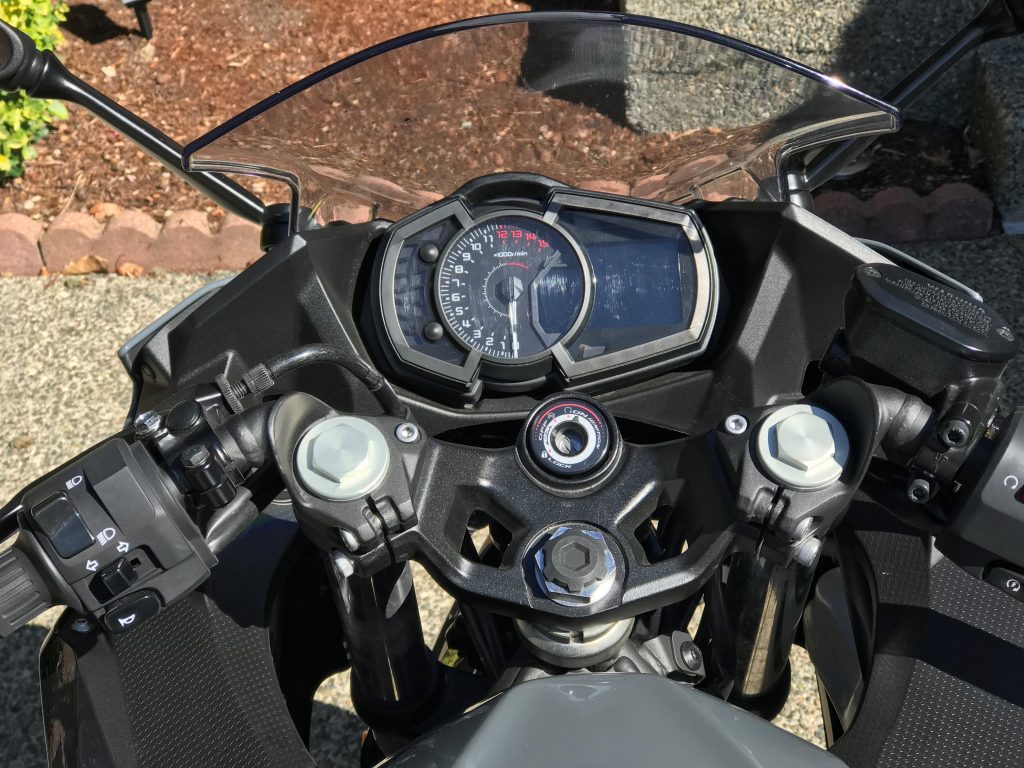
Upgrade to Z900
Since writing this post about a year ago, I have upgraded to Kawasaki Z900. I wrote a follow-up article contrasting Ninja 400 to Z900 and break down the reasons for the upgrade.
